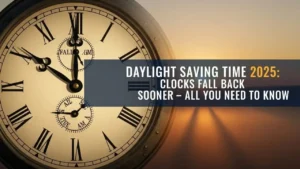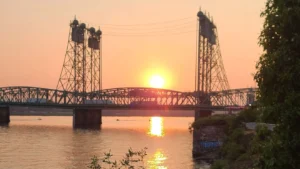Residents across the United States may get another chance to witness the mesmerizing northern lights this week. While cloudy skies in Portland could block the view locally, the auroras are expected to illuminate skies across 18 states on Wednesday night, thanks to an ongoing geomagnetic storm.
Widespread Visibility Across the Northern U.S.
The auroras, also known as the aurora borealis, may be visible across large portions of the northern United States. According to the National Oceanic and Atmospheric Administration (NOAA), the states with potential visibility include Alaska, Washington, Oregon, Idaho, Montana, Wyoming, North Dakota, South Dakota, Nebraska, Minnesota, Iowa, Wisconsin, Illinois, Michigan, New York, Vermont, New Hampshire, and Maine.
People in these regions could catch the spectacular lights if the skies remain clear and they are far from city light pollution.
Also Read
Why the Northern Lights Are Appearing Now
The dazzling light display is the result of heightened solar activity. Earth is currently in the midst of a “solar maximum” — the most active phase of the sun’s roughly 11-year cycle, known as Solar Cycle 25. This period is expected to continue into 2026, bringing frequent solar flares and geomagnetic storms.
The Space Weather Prediction Center reported that a major solar flare detected on Tuesday was “one of the strongest flares of the cycle.” These solar eruptions send charged particles streaming toward Earth, where they interact with the planet’s magnetic field and atmosphere to produce the northern lights.
Storm Reaches ‘Severe’ Levels
By Wednesday, geomagnetic storm levels had intensified to “strong” and “severe,” meaning that Earth’s magnetic field was being significantly disturbed by charged solar particles. These conditions greatly increase the chances of auroras being visible farther south than usual.
NOAA’s latest geomagnetic storm forecast shows that these storms can cause vivid displays of red, green, and purple hues dancing across the sky, especially in areas away from artificial light.
How to See the Lights
For the best chance to view the aurora, experts recommend traveling away from urban light pollution and finding a location with a clear view of the northern horizon. Even in areas where visibility is predicted, cloud cover may obscure the view — as is expected in Portland and other parts of the Pacific Northwest.
Those eager to track the aurora’s movement can check NOAA’s 30-minute aurora forecast, which provides near real-time predictions of where the lights are most likely to appear.
Looking Ahead
As the solar maximum continues into next year, opportunities to see the northern lights in the continental U.S. may become more frequent. For now, if weather permits, stargazers across the northern states could be treated to one of nature’s most stunning light shows on Wednesday night.












